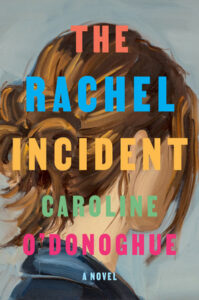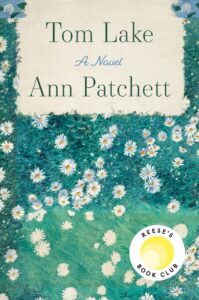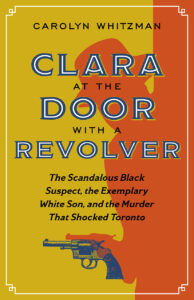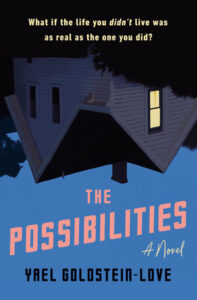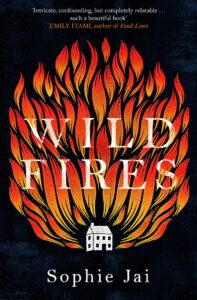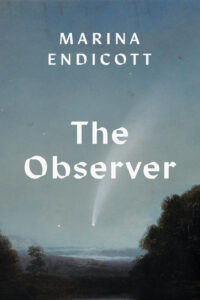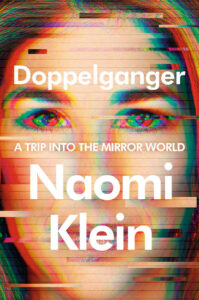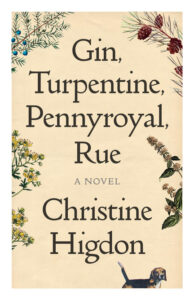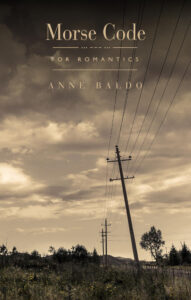November 3, 2023
Four Books I Really Loved
These four books are going to have spots on my Favourite Books of the Year list for sure, so I want to make note of them them here, but (apart from Penance, which I read last weekend) they were also books just so thoroughly read for pleasure that I didn’t want the work of writing a proper review….
Penance, by Eliza Clark
I bought Penance after reading a review in the New York Times and I was so glad I did. Set in a desolate English seaside town (is there any other kind of English seaside town?) on the literal eve of Brexit, it’s the story of a teenage girl who is set on fire by a group of her peers, the novel framed as a Capote-esque true crime expose by a male author who has interviewed the girls involved in the incident, as well as the mother of the victim. Although by the end of the book, readers will be asking who isn’t the victim here, and while the dead girl hardly had it coming, this also isn’t a typical story of bullies gone homicidal—there are all kinds of dynamics at play, and there’s a centuries old curse, a legacy of witch trials, a haunted amusement park, and more, which made it a pretty satisfying read for near Halloween.
*
Games and Rituals, by Katherine Heiny
It’s possible that loving Katherine Heiny’s work could constitute a very large part of my literary identity if I let it, and a highlight of 2023 for me was that a new Heiny book was in it, just as I’d read everything else she’d written (and I guess it’s time to reread now). I didn’t love Games and Rituals as much as I did her earlier collection Single, Carefree, Mellow, but that’s a high bar, and I did love it enough to read an advanced copy during a snow storm in December and then buy a hardcover and read the whole thing again in April. All these months later, I’m still thinking about the story of the women dressed inadequately as she’s helping her husband’s ex-wife move, hauling boxes in the freezing cold, a woman she’d first encountered years before when the two of them worked a overnight suicide hotline together. Heiny gets compared to Laurie Colwin (I encountered her first as emcee of a literary event celebrated the reissue of Colwin’s work in 2021), but she also has Sue Miller vibes in mapping unconventional emotional terrain and reinvention of the family tree as family is made and remade. I love her.
*
The Rachel Incident, by Caroline O’Donoghue
I read this one over the August long weekend, partly on the beach, and it was incredible, twisty and full of surprises. It’s about an Irish journalist who lives in London covering Irish issues, their abortion referendum in particular, and she happens to be quite pregnant with her first child, all this the backdrop to a story of something that happened years before when she was a student in Cork and shared a house with her friend James, who’d been her colleague at a bookstore where they’d finagled a professor she’d had a crush on into holding a book launch for his academic book that really wasn’t of interest to anyone, but what happens that night changes the course of everybody’s life. A story of class, love, and friendship. I loved it.
*
Tom Lake, by Ann Patchett
I bought the hype, and the book lived up to it, but also I wasn’t resisting, and I think that’s key. A slow and cozy book, set during Covid lockdown. A mother’s three grown daughters return home to help with the family’s cherry harvest, and she tells them stories of her experiences playing Emily in productions of “Our Town,” the daughters still scarce believing that once upon a time, their mother was almost a movie star. This is a novel about mothers and daughters and their unknowability to each other in fundamental ways. It’s also an ode to Thornston Wilder’s “Our Town,” which I know absolutely nothing about (I think it’s quintessentially American…), and I enjoyed it anyway. Plus I found a used copy of “Our Town,” which I’m looking forward to reading soon.
October 18, 2023
Clara at the Door With a Revolver, by Carolyn Whitzman
A sad reality of my life is that there are more books than time, which means that many review copies that arrive on my doorstep don’t end up getting read (and for many of these, I was never the target audience anyway). And usually my calculation for what to keep and what to pass along works out fine, but it sure didn’t in the case of Carolyn Whitzman’s Clara at the Door With a Revolver, which I may have even received two copies of, but I don’t read a ton of nonfiction anyway, and never got around to which I was terribly sorry about once I’d attended the Toronto Arts and Letters Club’s panel for the Toronto Book Awards and listened to Whitzman read from and present about her book, which was a side project to her academic work on housing policy. Because the presentation was fantastic and Whitzman made clear that this story of a Black woman in 1890s’ Toronto who dressed in men’s clothing and famously carried a gun who managed to be acquitted by an (all white male, obviously) jury for the murder of a wealthy young man has a lot to tell readers about both its time and our own.
All of which primed me to be altogether ready to be hand-sold a copy of this book by the amazing Mary Fairhurst Breen (whose memoir I read awhile back!) at the Spacing Store on Saturday, and am I ever glad I bought it. I had my Covid booster on Saturday afternoon and spent a grey and blustery Sunday resting it off and speeding through this fast-paced story that’s gripping and fascinating, but also so rich with historical detail about, say, what life was like for a Black woman in 1890s Toronto, how the city’s robust newspaper scene (there were seven dailies) helped to define the stories they told, or that boathouses were notorious scenes of carnal activity (who knew!). There is also a cameo by Arthur Conan-Doyle, and lots about housing, and my suspician that Whitzman’s work would turn out to be fresh, engaging, vivid and relevant turned out to be spot on.
October 16, 2023
Cocktail, by Lisa Alward
I adored Lisa Alward’s Cocktail, a short story collection whose compelling sepia tones (both on the cover and within the text) manage not to undermine how fresh and vibrant each and every single story is. These are stories about houses and the secrets they hold, about fractured families and the limits of family life—the end of childhood, a marriage unravelled. In the title story, a woman looks back on her parents’ parties, and the strange guest who ended up in her bedroom. In “Old Growth,” a woman travels with her very-ex-husband to see the off-the-grid property he’s thinking of buying and contemplates the ways in which they’re forever connected. “Hawthorne Yellow” tells the story of a new mother whose paint stripping reveals haunting images beneath the layers (recalled in the book’s cover). “Orlando, 1974” begins, “My father says Stephen only threw up because of the Hawaiian pancakes and can still go to the Magic Kingdom (and Stephen’s stomach becomes this story’s Chekhov’s gun). The ex-husband from “Old Growth” is the protagonist of “Bear Country,” set a few years earlier, in which a father escapes his troubled son (and a difficult life) by flirting with a stranger. The mother of an adult son grapples with his connection to her ex-husband’s partner in “Hyacinth Girl.” In “Maeve,” a woman in a moms’ group probes the mysteries of another woman’s life. “Wise Men Say” is a love story of a different kind, as a woman reconnects with a partner she wasn’t kind to years ago and things don’t turn out the way she imagines. “Pomegranate” is a collectively narrated story of teenage girls and their hunger. “Bundle of Joy” was my very favourite story, one that’s agonizingly “cringe,” as the kids say, about Ruth, a mother who shares a difficult relationship with her adult daughter who has just given birth to a baby, and Ruth’s not quite good enough intentions gone oh-so-wrong as she struggles to connect. In “Little Girl Lost,” a woman encounters an artist and his daughter at two pivotal times in her life. And finally “How the Smoke Gets in Your Eyes,” a story that contains lifetimes about an elderly widow whose children don’t understand the decisions she made in her marriage, and all those things that seem like a small price to pay for love.
October 11, 2023
The Possibilities, by Yael Goldstein-Love
Considering that I am someone whose new novel contains the line, “The children we have make any other world impossible*,” a novel that’s world’s away from this one but also taps right into notions of postpartum and parental anxiety (ASKING FOR A FRIEND also contains the line, on its very first page, “Parenthood…was—if you were lucky—like friendship, a story without end. The alternative too awful to contemplate. But what this also meant, of course, was that it never stopped, there were no breaks from the possibility of something new and worse to worry about around every single corner.”) then you won’t be surprised to know that Yael Goldstein-Love’s THE POSSIBILITIES tapped into something real and fundamental in my own psyche, but it also hooked (and fascinated) me as a reader in a deep and most visceral way.
And if you’re also an anxious sort when it comes to parenting, then you will know what it means to “ride the possibilities,” what Goldstein-Love’s protagonist described as the “car swerve” feeling, where it seems like some disastrous outcome has just been averted by a hair’s breadth. (Another line from my novel—”And how do you measure that line between everything that could have happened and what actually did?**). An idea that becomes literalized in this fantastic (in all senses of the word) speculative/literary mashup in which new mom Hannah’s debilitating anxiety actually becomes a superpower as she has to voyage into the multiverse to search for her missing baby (who is missing because, for babies, the boundaries between worlds and possibilities are especially blurry and thin).
A Wrinkle In Time, by Madeline L’Engle, meets Rachel Cusk’s A Life’s Work? I adored this novel, which almost caused me to cancel Thanksgiving because all I wanted to do was sit down and read it straight to the end.
*This line was actually borrowed from my wise friend Rebecca Dolgoy
**The great thing about being a book blogger is that I get to quote extensively from my own book in reviews of other peoples’.
October 5, 2023
Wild Fires, by Sophie Jai
Sophie Jai’s debut novel Wild Fires (which is nominated for the 2023 Toronto Book Award, was shortlisted for the 2023 Kobo Emerging Author Award and Winner of 2023 Fred Kerner Award for Fiction) is a dizzying, mesmerizing puzzle of a novel, a container for a story about a container for a family, which is to say, a house. A three story house on an ordinary street in West Toronto that is home to the most of the Trinidad-Canadian Rampersad family, a house fled by narrator Cassandra years before to get away from the whispers, the secrets, the spectre of death—but of course, the last is inescapable, and Cassandra is called home after the death of her cousin whose entire life had been tragically touched by the deaths of his brother and his mother before him.
In the house on Florence Street, doors stay shut, mouths stay closed, secrets closely guarded, and Cassandra’s need to make sense of her family’s story—to have it to told to her, and to be able to understand it—is firmly resisted by her mother and her sisters, though these women find other outlets besides story for conveying their emotions, including rage and powerful, enormous grief. And so Cassandra has to find other more roundabout, indirect ways to get closer to what she wants to know, her family throwing up obstacles and diversions all the while, the house on Florence Street absolutely riddled with metaphorical trapdoors and landmines whose triggers are impossible to avoid.
Wild Fires is a wily text, a most compelling literary mystery, a novel whose heart seems elusive at first—with so much being, literally, unspeakable. But by having to a take a long and winding route into the house on Florence Street—there are no shortcuts here—the reader will find themselves so deeply invested and absorbed in this tale, and unable to forget it.
September 26, 2023
The Observer, by Marina Endicott
Tomorrow night (Wednesday September 27) I’m appearing in Hamilton with Marina Endicott as part of a fundraising event for the Hamilton CFUW with an author talk and live music. Books will be for sale and available for signing after the event. Tickets are $15, support the CFUW scholarship fund, and on sale online or at the door! Buy yours now!
(I was also fascinated to see that, in both our novels, somebody cooks eggs that nobody ends up eating and which sit for too long before they’re finally thrown out…)
*
Oh, how I loved this quiet, meditative book, which was not about quiet or meditative things, but instead about violence, abuse, trauma, PTSD, deprivation, loneliness, and LOVE. A novel that doesn’t try to explain, just the facts, ma’am, but between the lines lies such depth and heart-wrenching emotion, with such beautiful prose floating right on the surface: “Does someone teach us to see beauty, or does the world show it to us all the time?”
It also just sparkles with its depictions of the rituals and rhythms of ordinary life, all the waiting, and enduring, and surviving. (“Not one to go to pieces, Kendra had brought a spinach dip in a bread bowl.)
The Observer is a fictionalized story of the Endicott’s own experiences as an RCMP spouse in rural Alberta, her protagonist, Julia, a playwright who arrives in Medway with her partner Hardy, an outsider in every way, but she receives a particular vantage point working for the local newspaper, from where the novel gets its title, and the novel is indeed her observations with minimal editorial, and her keen eye gives us a vibrant sense of the community, for better or for worse, and these stories of particular people because of a treatment of people in general, of society, of humanity: “But I needed more information, more data—not for gossip, but to understand Hardy’s situation and my own, to understand and choose how to live my own life.”
The Observer would make a really interesting companion to Kate Beaton’s Ducks, a different kind of story about rural Alberta, about being an outsider, about work, and male dominated fields, and violence, and loneliness, and such environments are bad for women and ultimately bad for everybody.
It’s a novel about light in the darkness (literally—its opening image is that of a comet), of being soft and porous in hard place, about hope amidst the harshness of reality, and about how sometimes all it ever takes to keep going is the miracle of *just one good thing.*
September 25, 2023
Doppelganger, by Naomi Klein
I first found out about the Naomi problem in 2019 when I read No is Not Enough: Resisting the New Shock Politics and Winning the World We Need, and my best friend was horrified, and I was confused about why she was horrified, and then when she figured it out, she told me to google “Naomi Wolf” and “chemtrails,” so I did, and finally understood, or at least kind of, because what actually explains what happened to Naomi Wolf?
And so that question, “Whatever happened to Naomi Wolf?” is something I have periodically wondered about ever since then, the question becoming more and more relevant as Wolf’s own influence grew and the stakes got higher, as she spouted Covid misinformation through 2021 and onward. A question that seemed also relevant as so many apparently intelligent and curious people disappeared down conspiracy rabbit holes (ie the UK book blogger DoveGreyReader who went full QAnon before disappearing from the internet altogether, or the bestselling Canadian historical fiction writer who, as of Saturday but not thereafter [once someone had flagged it in their Stories], was following something called Gays Against Groomers on Instagram).
Last week was a fascinating time to be reading Naomi Klein’s latest, Doppelganger: A Trip Into the Mirror World, which is a consideration of “No Logo” Klein’s own personal branding problem as she has frequently been confused with Wolf over the last decade or so, but also an investigation of how the trajectory of liberal-darling turned far-right poster-child Wolf has a lot to teach us about radicalization, misinformation, political stratification, and the failures of political systems of countries like Canada and the US whose vacuums bad actors like Wolf and her comrade Steve Bannon, and so many others have rushed to fill. [Please note that I called referred to Wolf as “Klein” throughout this whole paragraph, and just had to go back and change it. The struggle is…weird?]
Last week was a fascinating time to be reading Doppelganger because the Mirror World of conspiratorial thinking was front and centre after supposed “parents rights”/anti-LGBT protests across the country on Wednesday that really were Convoy 2.0 with the same PPC signs and Fuck Trudeau flags (and I fear that well meaning people responding to these ding dongs with sincerity and heart are letting conspiracy nutjobs set the rules of engagement, like, it’s only a “culture war” if the other side mobilizes right back, playing right into their hands, which is exactly what they want, especially *play,* it all being just a game to these people anyway, rather than any of their ideas being worth responding to with consideration and logic. It is not irrelevant that, as Klein notes in her book, Steve Bannon dreamed up his ideas for world domination during a period in which he was working for an online gaming company)
In Doppelganger, Naomi Klein comes as closer as I’ve ever seen anyone come to explaining just what the heck is going on here, connecting the dots on a vast canvas, making sense of the nonsensical, in a way that will be familiar to anyone who’s read Klein’s work before, but also weaving in elements of memoir that are new to her work and which add a real sense of humanity to these stories in which so many of our fellow humans have come to seem almost alien.
Because of this book, I think I know finally (kinda, sorta) understand what was happening at the house I drove by in Norfolk County during the summer of 2022 that was flying a swastika out front, apparently a protest of the federal government. An anti-authoritarian protest that has one running authoritarian propaganda on one’s flag pole, the guy who hates Nazis so much that he’s appropriated their symbols, which is how it happens in the mirror world.
Doppelganger is a study of doubleness, and doubles—Klein and Wolf; left and right; self and avatar; who Wolf was and who she’s become; of how each “side” in this situation is imagining the other is living in a crazy dreamworld; of Israel and Palestine; of foundlings and how some parents of autistic children describe their offspring in similar terms, seemingly “normal” children replaced by another; about how so much far-right rhetoric employs language and ideas from progressive causes and can also thereby render language as meaningless. She writes about buffoonish monsters like Boris Johnson and Donald Trump, and even Putin, and describes “pipikism”—a term borrowed from a Philip Roth novel—”the antitragic force that inconsequencializes everything—farcicalizes everything, trivializes everything, superficializes everything.” She writes, “It doesn’t just farcicalize what they say; it farcecalizes what many of us are willing and able to say afterward.”
But of course any mirror is not just about its reflection, but also about what it tells us about ourselves, and Doppelganger is also a fascinating self-examination, as well as an actually kind and sympathetic study of what might have happened to Wolf and what particular aspects of her character make Klein a bit uncomfortable for what they suggest about Klein herself (and the last chapter, in which Klein describes them meeting in the early 1990s when Klein was a reporter for the University of Toronto’s student newspaper, The Varsity, is generous, weird and extraordinary). She also makes clear that social movements are the way out of this mirror world nightmare we find ourselves in, acknowledging that some conspiracies are indeed quite real (ie disproportionate power in the hands of a few unelected dudes who have too much money, for example) and showing that collective efforts are the only way to meet the pressing challenges of future (ie climate change, fear of which is provoking all this terror in the first place, such refusal to look reality in the face).
“Calm is resistance,” Klein writes in Doppelganger, quoting John Berger’s response to her earlier book, The Shock Doctrine, and I thought about that line too in the context of last week’s hateful demonstrations, how responding to panic and terror with panic and terror is simply a perpetuation of a narrative I don’t want to be a part of.
“The effect of conspiracy culture,” writes Klein in her new book, is the opposite of calm; it is to spread panic.” In Doppelganger, Klein suggests a deeper, more thoughtful way of acting (and thinking) in response.
September 19, 2023
Gin, Turpentine, Pennyroyal, Rue, by Christine Higdon
Christine Higdon has followed up her award-winning debut with the most extraordinary new novel, Gin, Turpentine, Pennyroyal, Rue, a book that somehow manages to be everything all at once: action-packed, artful, playful, timely, timeless, weighty, light, compelling historical fiction that maps so beautifully onto right now. Set in Vancouver in the 1920s, it’s the story of the four working-class McKenzie sisters and their supposedly divergent paths over the course of a year—infertility, pregnancy, an illegal and nearly fatal abortion, and a lesbian relationship–and how these paths are not divergent at all, but instead irrevocably connected to bodily autonomy, choice, and women’s liberation. The 1920s’ backdrop is fun and compelling, but the glitter stark against the darkness of what came before—the sisters watched loved ones return from WW1 with minds and bodies broken, or else not return at all; their brother dies in the flu pandemic; their mother is depressive and addicted to opium. The novel moves between their points of view, including the secrets they keep from each other, with a sweep that’s at once both intimate and cinematic, the narrative held together by an omniscient beagle (of course). A truly brilliant literary (and feminist) achievement, and just a wonderful read, I loved this book so much!
August 10, 2023
Morse Code for Romantics, by Anne Baldo
I was soliciting picks for 49thShelf’s Summer Books lists when Stephanie Small from The Porcupine’s Quill got in touch. “It might not look like one from the cover,” she wrote, “but actually, I think Anne Baldo’s Morse Code for Romantics makes a good summer read,” which is an understatement if I ever heard one. For this is a book that is so steeped in summer, a collection of stories with sand between their toes, set along the shores of Lake Erie, scrappy cottages and rundown motels. With lines like “We don’t know it yet but we will never be bigger, or more real, than we are right here this summer. We will keep fading and shrinking, in small ways, forever always, after this.”
For the most part, these are standalone stories—the exceptions are a handful in which characters reappear—but they’re linked by geography, by recurring imagery, and themes which make this collection such a satisfying book. They’re linked too by being crafted to a standard of real excellence, and I’m thinking of the image on the book’s cover, of the power lines connecting the utility poles, without which I’d probably be employing a metaphor right now along the lines of beads on a string, one gleaming gem right after another.
These are stories of working class people, of people who’ve dropped out of the working class, of Italian-Canadians in the Windsor region. Most are fairly contemporary, the exception being “Marrying Dewitt West,” about the arrogant 19th-century naturalist investigating reports of a sea monster in the depths of Lake Erie who becomes the object of a wily young woman’s affections. And the sea monster image occurs also in “Monsters of Lake Erie,” which begins with an explanation of sonar equipment used in attempts at detecting the Loch Ness Monster: “I thought when you had been lonely for a long time you gained a similar sort of ability with people. To look at them, beaming out a silent pulse, and be able to glimpse the dark, monstrous shapes of their own loneliness lurking underneath the surface.”
There are a lot of lonely people and dark, monstrous lurkings in Morse Code... But peonies too, and shimmering light, a daring to hope, to dream. Magic and mermaids—”But people always forget that mermaids are monsters.” Sparks and fire.
August 8, 2023
Yellowface, by R.M. Kuang
So, I can’t say I’d necessarily recommend R.M. Kuang’s Yellowface to anyone else who has a new novel coming out in 28 days, because it’s just a little too on the nose, a satire that’s so real about the pressures and cutthroat competition of the publishing industry, the high stakes and low odds which “have made it impossible *for white and nonwhite authors alike* [emphasis mine] to succeed…” (to quote from the novel’s white narrator, who steals a manuscript from her dead friend, an Asian-American bestselling novelist, whose CV is not entirely distinct from that of R.M. Kuang herself—there are so many complicated meta-layers of to this work!). Mostly though, what a white author who sees her own experience in this novel is quite likely to miss is that Yellowface is also a satire of the way in which white women are able to put themselves at the centre of every story, wholly accustomed to being “the expected reader” (to borrow a phrase from Elaine Castillo) of every narrative they encounter, and oh, Kuang plays some tricks with that tendency with both her characters and readers alike. Edgy and brilliant.


